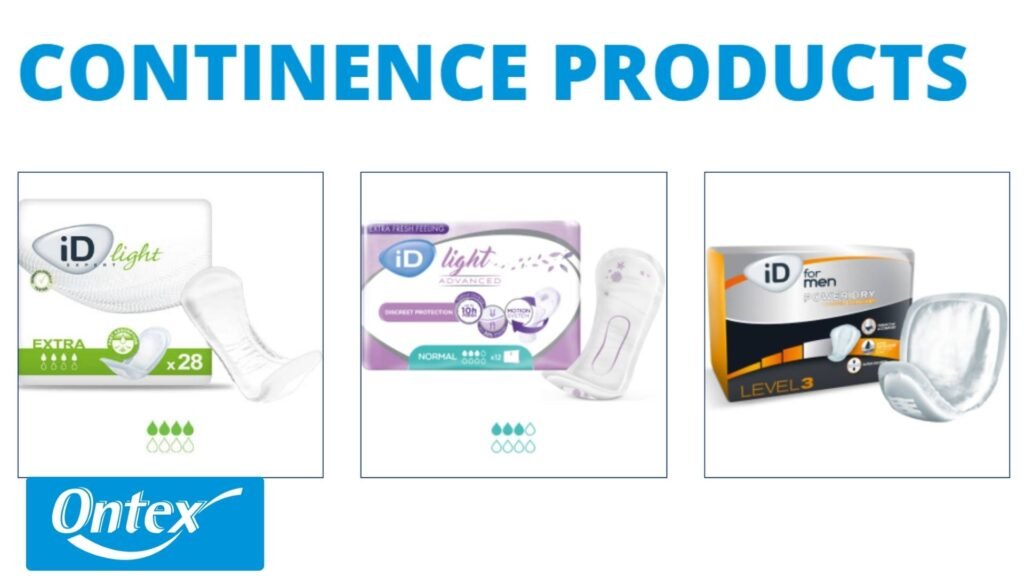
If you rely on incontinence products, you’re not alone. Millions of people depend on them daily for comfort and security. But have you ever thought about what happens after they’re discarded?
Traditional incontinence pads and adult diapers are made with plastic-based materials, synthetic chemicals, and non-biodegradable packaging. Once thrown away, these products take centuries to break down, contributing to global waste and pollution. The production process also adds to the carbon footprint, increasing environmental harm.
Fortunately, the industry is evolving. Companies like Ontex Healthcare are pioneering sustainable practices, offering plastic-free, biodegradable, and reusable alternatives.
By focusing on renewable materials and energy efficiency, they are leading the way in green healthcare, providing consumers with eco-friendly options that don’t compromise on quality or protection.
In this guide, we’ll explore the environmental impact of traditional incontinence products, introduce eco-friendly materials, and highlight the best sustainable products on the market.
Whether you’re a health professional, a caregiver, or someone managing incontinence, you’ll discover solutions that balance comfort, effectiveness, and sustainability.
The Environmental Impact of Traditional Incontinence Products
Every year, billions of incontinence pads and adult diapers are disposed of, with most ending up in landfills. These products are typically made from synthetic fibers, plastic layers, and superabsorbent polymers (SAPs)—materials that do not decompose easily. The result? An overwhelming waste problem that contributes to long-term environmental damage.
The Hidden Harm of Plastic and Chemicals
Many traditional products contain harmful chemicals such as bleaching agents, dyes, and fragrances. While these substances improve absorbency and odor control, they also pose risks to human health and the environment. Over time, these chemicals can leach into the soil and water, affecting ecosystems and communities.
Carbon Footprint and Energy Use
The manufacturing and transportation of disposable incontinence products demand significant energy resources, further increasing their carbon footprint. The reliance on non-renewable materials in production only exacerbates the impact. By shifting toward sustainable products, consumers and manufacturers can actively contribute to reducing waste and lowering emissions.
A Need for Sustainable Alternatives
The demand for eco-friendly incontinence solutions is rising, driven by growing awareness of climate change and the need for sustainable practices. Many brands are now investing in green technology, developing plastic-free, biodegradable, and reusable options to meet the needs of both consumers and the planet.
What Makes an Incontinence Product Eco-Friendly?
Not all sustainable products are created equal. Some brands market themselves as “green” without fully eliminating harmful chemicals or plastic waste. To truly reduce the environmental impact, eco-friendly incontinence products should meet the following criteria:
1. Biodegradable and Plastic-Free Materials
A key feature of eco-friendly incontinence products is the use of renewable materials like organic cotton, bamboo fibers, and plant-based absorbents instead of synthetic plastics. Unlike conventional incontinence pads, which can take centuries to break down, biodegradable options decompose naturally, reducing landfill waste.
2. Free from Harmful Chemicals
Many traditional products contain fragrances, dyes, and bleaching agents that can irritate sensitive skin and pollute the environment. In contrast, eco-friendly options prioritize natural, chemical-free ingredients that are gentle on both the body and the planet.
3. Reusable Alternatives to Disposables
For those looking to make a lasting impact, reusable incontinence underwear provides a sustainable alternative to disposables. These products often feature moisture-wicking layers and extra protection, making them just as effective as their single-use counterparts while significantly reducing waste.
4. Ethical Manufacturing and Sustainable Packaging
Beyond the product itself, green healthcare brands focus on energy efficiency, responsible sourcing, and recycled packaging. Companies like Ontex Healthcare are leading the charge by integrating sustainable practices into their production processes.
As more consumers demand eco-friendly materials and sustainability, the market is shifting toward solutions that balance performance with environmental responsibility.
Best Eco-Friendly Incontinence Products on the Market
With increasing awareness of sustainability, more brands are offering plastic-free, biodegradable, and reusable materials for incontinence care. Below are some of the best eco-friendly incontinence products available today.
1. Plastic-Free Disposable Incontinence Pads
Many consumers prefer the convenience of disposables but want a more sustainable alternative. Biodegradable incontinence pads use eco-friendly materials like organic cotton and bamboo fibers, providing high absorbency without contributing to plastic waste.
Benefits:
- Fully biodegradable within months instead of centuries.
- Made with natural, chemical-free components that are gentle on sensitive skin.
- Packaged using recycled materials to further minimize the environmental impact.
2. Reusable Incontinence Underwear
For those looking to completely reduce waste, washable incontinence underwear is an excellent long-term investment. Many modern designs feature moisture-wicking layers, ensuring extra protection without the need for disposables.
Why Choose Reusable?
- Reduces waste dramatically compared to single-use alternatives.
- Made from soft, breathable, and sustainable fabrics like bamboo and organic cotton.
- Cost-effective over time, saving money on frequent purchases.
3. Biodegradable Adult Diapers
Unlike traditional adult diapers, these are made from renewable materials and decompose naturally, reducing their carbon footprint.
Top Features:
- Free from harmful chemicals and artificial additives.
- Designed to provide extra protection without sacrificing comfort.
- Supports sustainable practices in personal care.
4. Ontex Healthcare’s Sustainable Innovations
As a leader in green healthcare, Ontex Healthcare has developed innovative incontinence products that prioritize sustainability. Their range of plastic-free and biodegradable options reflects a commitment to sustainable practices while maintaining high performance for users.
The market for eco-friendly incontinence products is expanding, offering effective solutions for those looking to minimize their impact on the planet without compromising quality.

Addressing Reader Concerns: Cost, Comfort & Effectiveness
Switching to eco-friendly incontinence products raises important questions about cost, performance, and comfort. Let’s address the most common concerns.
1. Are Sustainable Incontinence Products More Expensive?
A common misconception is that sustainable products are unaffordable. While biodegradable diapers and plastic-free incontinence pads may have a slightly higher upfront cost, they offer long-term savings.
- Reusable incontinence underwear can be washed and reused dozens of times, reducing overall spending.
- Many sustainable brands now offer affordable biodegradable options, making eco-conscious choices more accessible.
- Government programs and health care initiatives increasingly support green alternatives for patients and caregivers.
For cost comparisons, resources like Environmental Working Group provide insights into sustainable consumer choices.
2. Do They Work as Well as Traditional Products?
Advances in green technology have led to eco-friendly materials that provide the same level of protection as conventional options.
- Biodegradable incontinence pads use plant-based superabsorbent cores for leak-proof performance.
- Reusable options now feature moisture-wicking layers that keep skin dry and irritation-free.
- Plastic-free diapers integrate natural fibers while maintaining durability.
For additional reviews on biodegradable hygiene products, sites like Sustainable Jungle offer consumer insights on effectiveness.
3. Are They Comfortable?
Sustainability doesn’t mean sacrificing comfort. In fact, many eco-friendly incontinence products offer softer, more breathable fabrics than their traditional counterparts.
- Bamboo and organic cotton reduce irritation and are gentle on sensitive skin.
- Reusable incontinence underwear feels like regular clothing rather than bulky disposables.
- Sustainable materials improve airflow, reducing toxicity and odor buildup.
The shift to sustainable products is driven by both environmental impact and human health benefits, ensuring users feel both protected and comfortable.
By addressing these key concerns, it becomes clear that making the switch to sustainable practices in incontinence care is both practical and beneficial.

How to Transition to Eco-Friendly Incontinence Products
Switching to sustainable products can feel overwhelming, but small steps make the transition easier. Here’s how to gradually incorporate eco-friendly incontinence solutions into daily life.
1. Start with Biodegradable Disposables
If you’re used to traditional incontinence pads and diapers, begin by trying biodegradable alternatives. Many brands now offer plastic-free options that perform just as well as conventional products.
- Look for plant-based absorbent cores that provide extra protection without relying on synthetic gels.
- Choose brands committed to sustainable practices, like Ethical Consumer, which ranks hygiene products based on environmental impact.
2. Consider Reusable Incontinence Underwear
For those looking to make a bigger impact, switching to reusable materials is an effective way to reduce waste.
- Reusable incontinence underwear can be machine washed, reducing landfill contributions.
- Made from soft, moisture-wicking fabrics, they offer gentle and breathable protection.
- Many brands now design discreet, high-absorbency options that feel like regular underwear.

3. Proper Care and Maintenance
Whether using biodegradable diapers or washable incontinence products, proper care ensures longevity and hygiene.
- Store biodegradable products in compostable waste bags before disposal.
- Wash reusable items with mild, fragrance-free detergents to maintain absorbency.
- Air-dry products when possible to reduce energy consumption.
4. Support Sustainable Brands & Retailers
Many organizations now prioritize sustainability, offering eco-friendly incontinence products online and in specialty stores.
- Brands like Ontex Healthcare continue to expand green healthcare initiatives, providing more accessible solutions for consumers.
- Online platforms like The Green Hub offer curated lists of sustainable hygiene products.
The transition to sustainable options doesn’t have to happen overnight. By making small, conscious changes, individuals can contribute to reducing waste while still receiving the comfort and protection they need.

A Greener Future for Incontinence Care
The world is shifting toward sustainable solutions, and incontinence care is no exception. As more consumers and health professionals recognize the environmental impact of traditional incontinence pads and diapers, the demand for eco-friendly incontinence products continues to grow.
By choosing biodegradable diapers, reusable incontinence underwear, and plastic-free alternatives, individuals can actively reduce waste while benefiting from natural, skin-friendly materials. Companies like Ontex Healthcare are leading the way in green healthcare, ensuring that sustainability doesn’t come at the cost of quality or effectiveness.
Making the switch is easier than ever. Whether you start by trying a biodegradable option or commit to reusable materials, every step toward a more sustainable choice makes a difference.
Ready to explore eco-friendly incontinence solutions? Visit Wordiply to discover more about sustainable living and responsible consumer choices.




